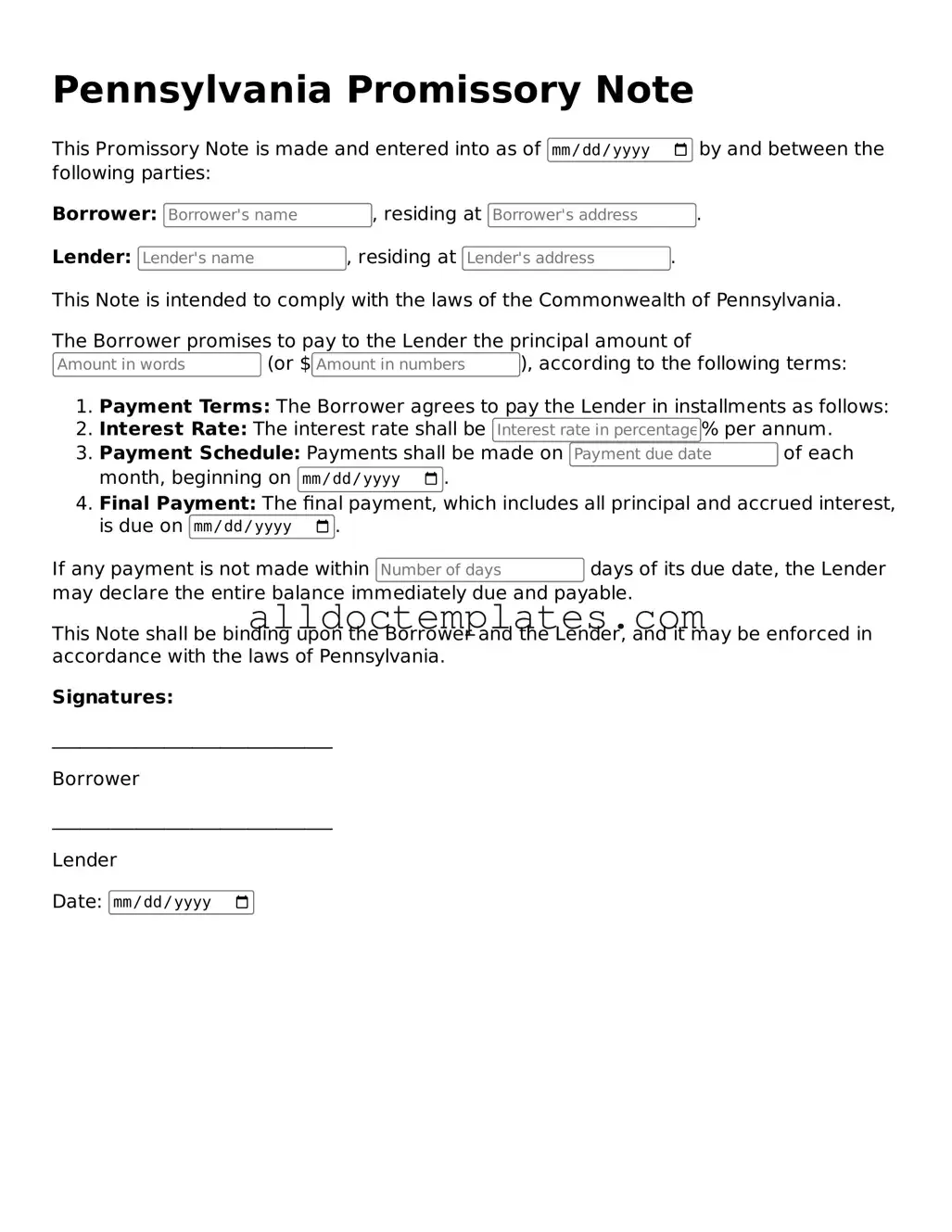Free Promissory Note Document for Pennsylvania State
A Pennsylvania Promissory Note is a written promise to pay a specified amount of money to a designated person or entity at a certain time. This legal document outlines the terms of the loan, including interest rates and repayment schedules. Understanding this form is essential for both lenders and borrowers in Pennsylvania.
Get Your Form Now
